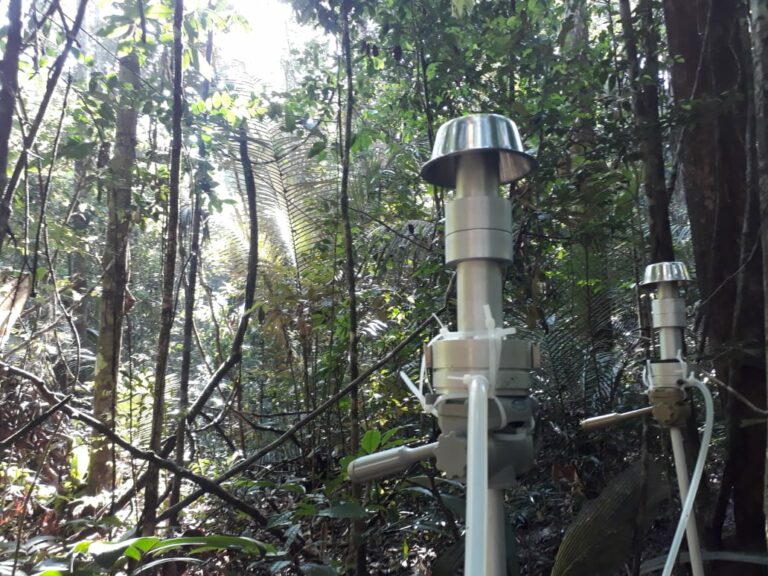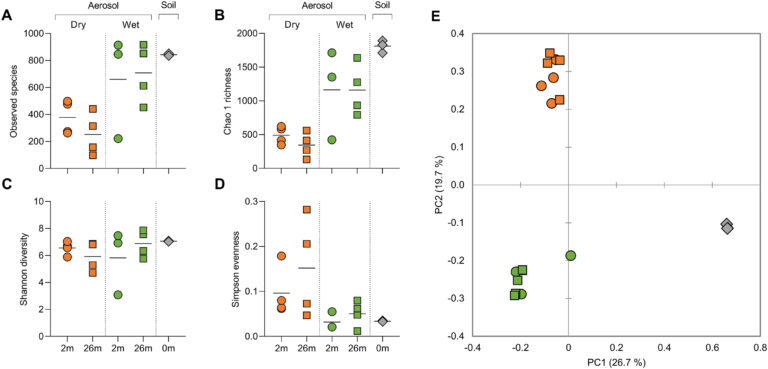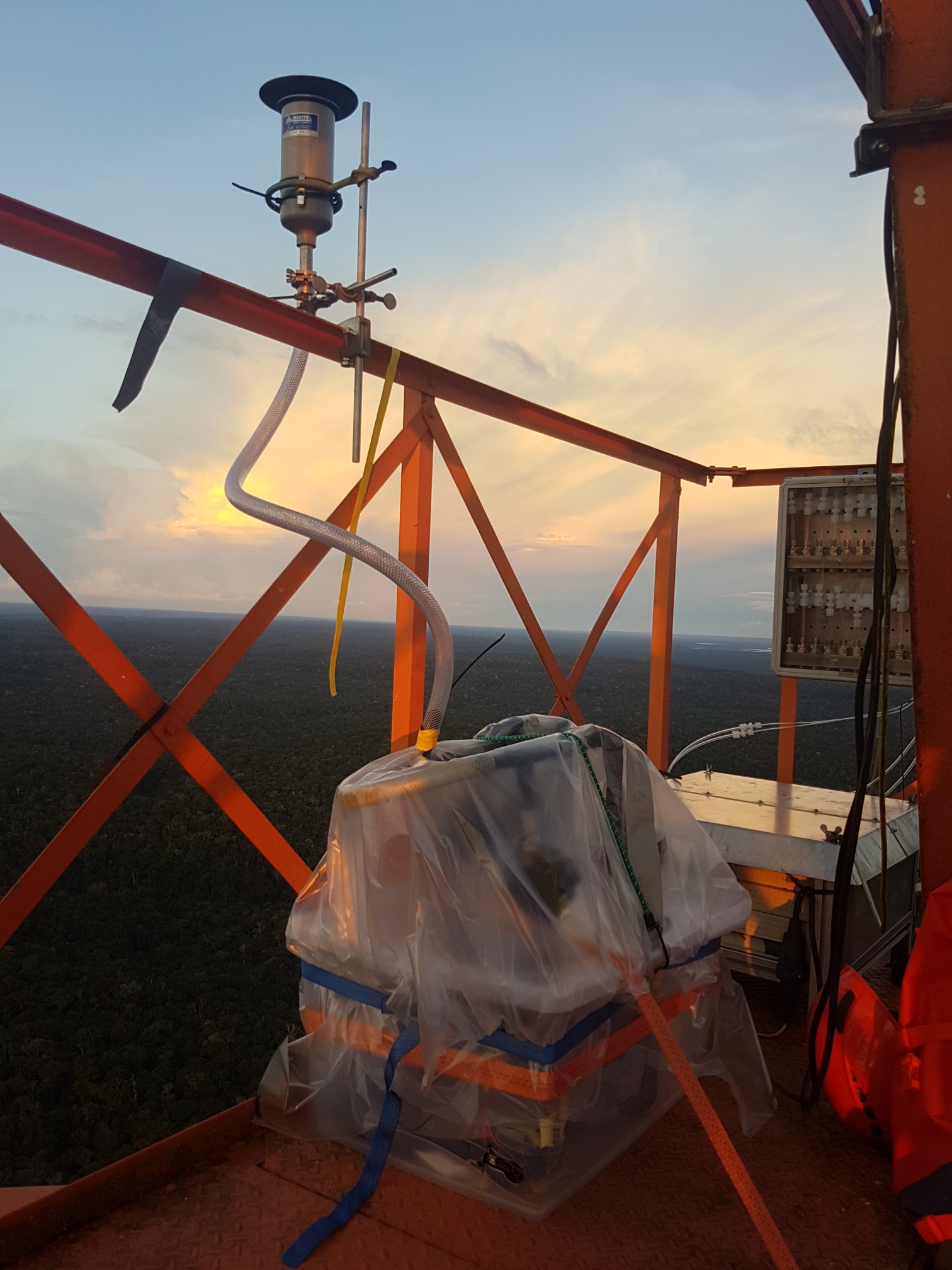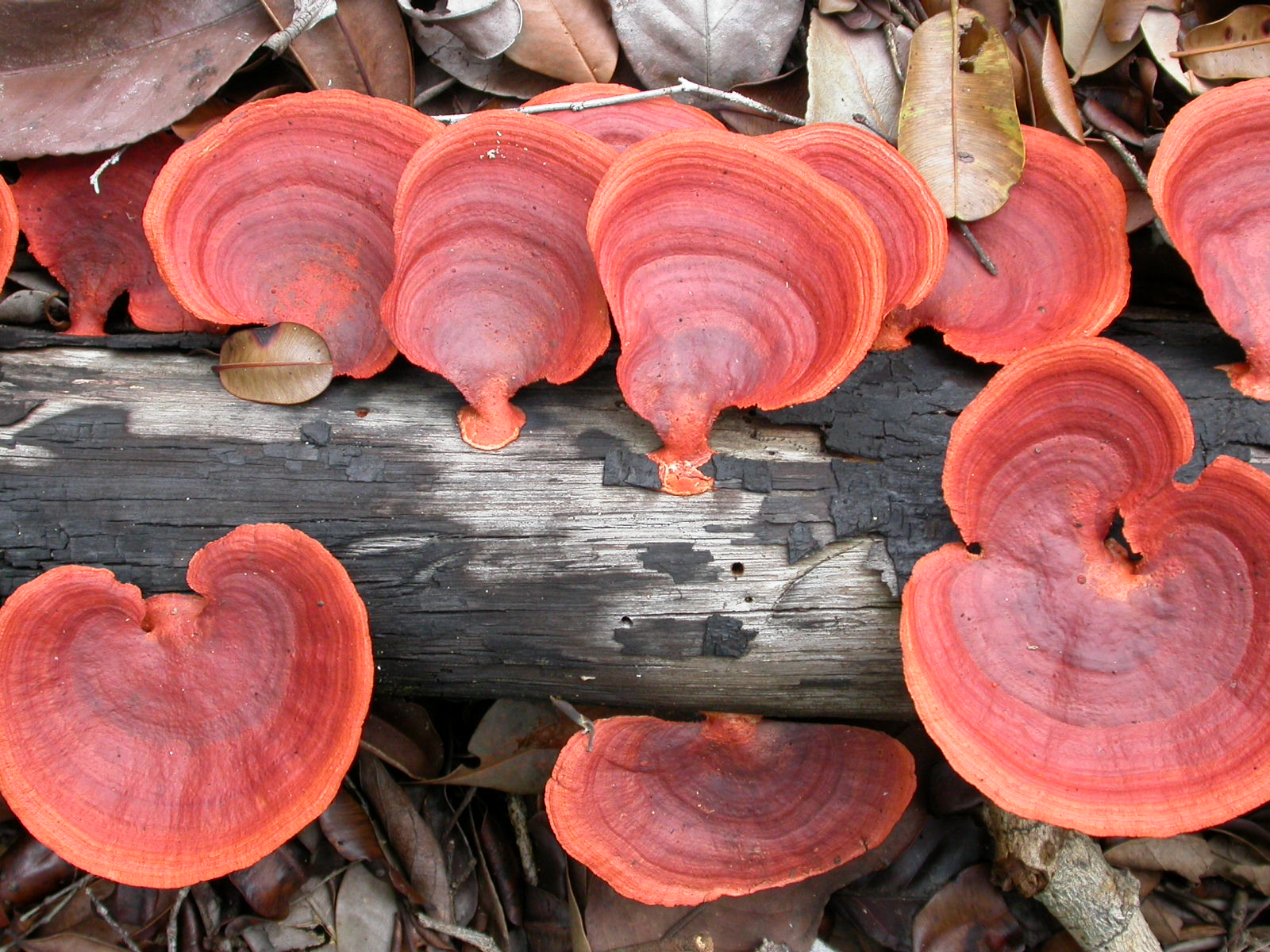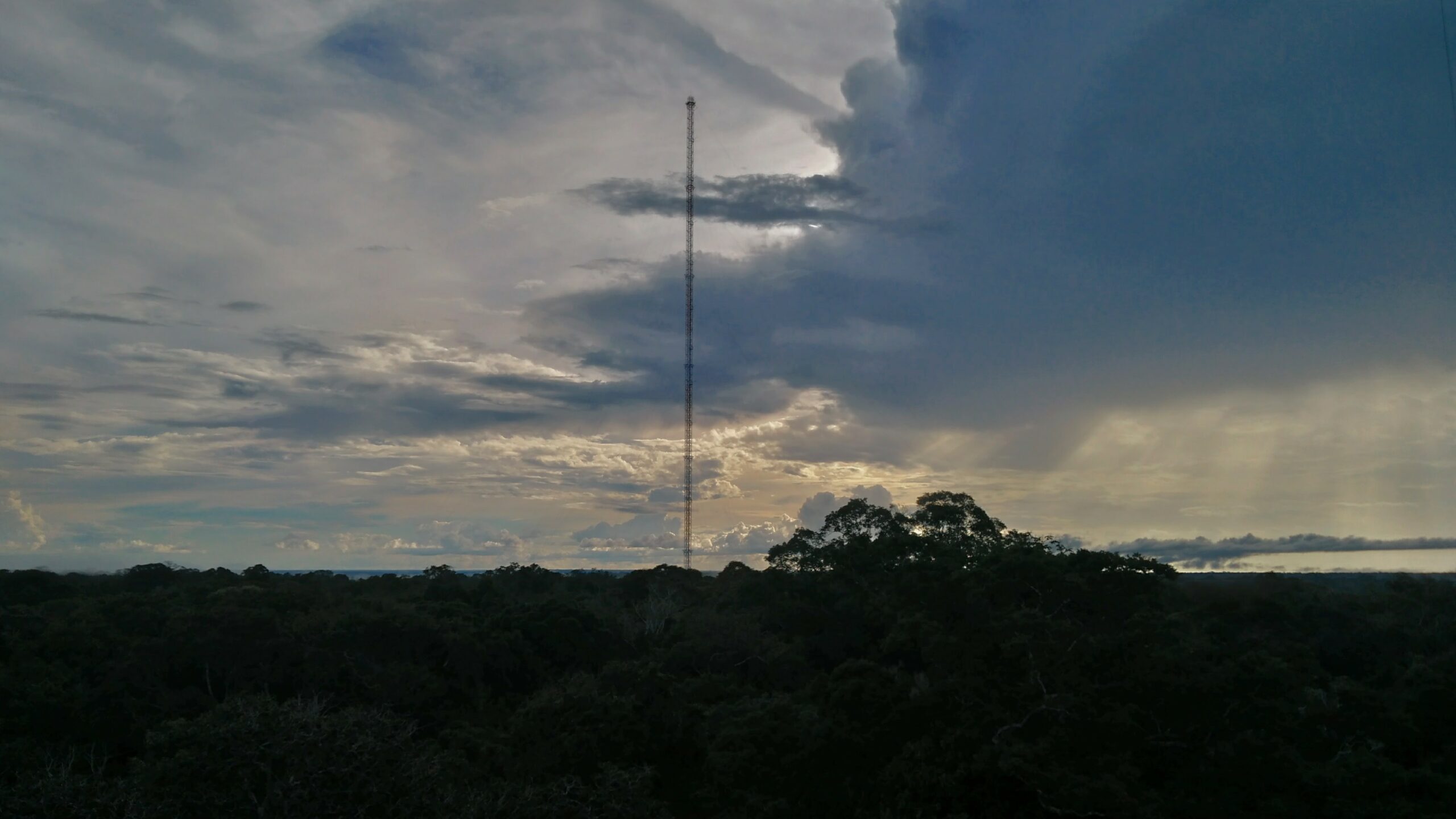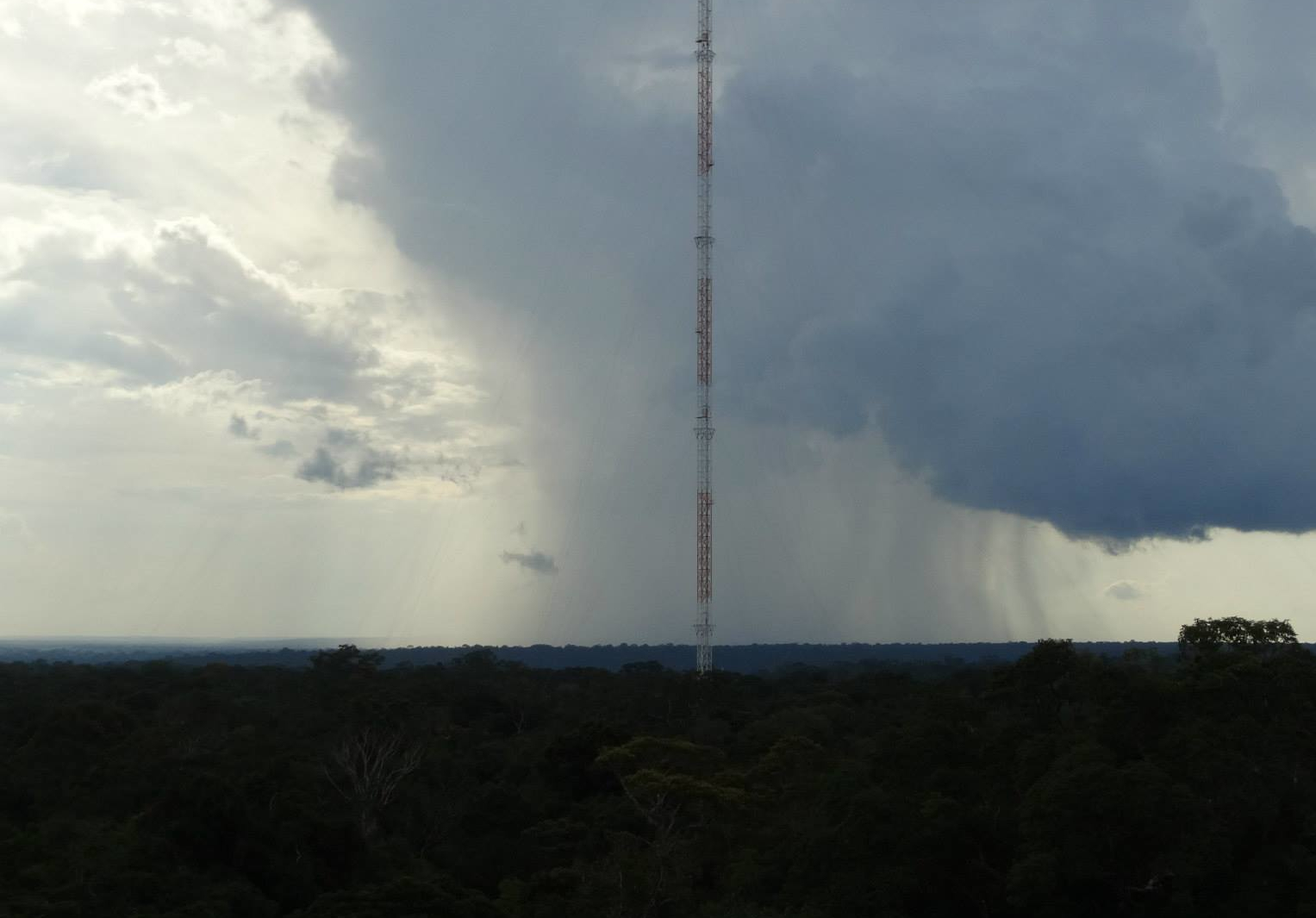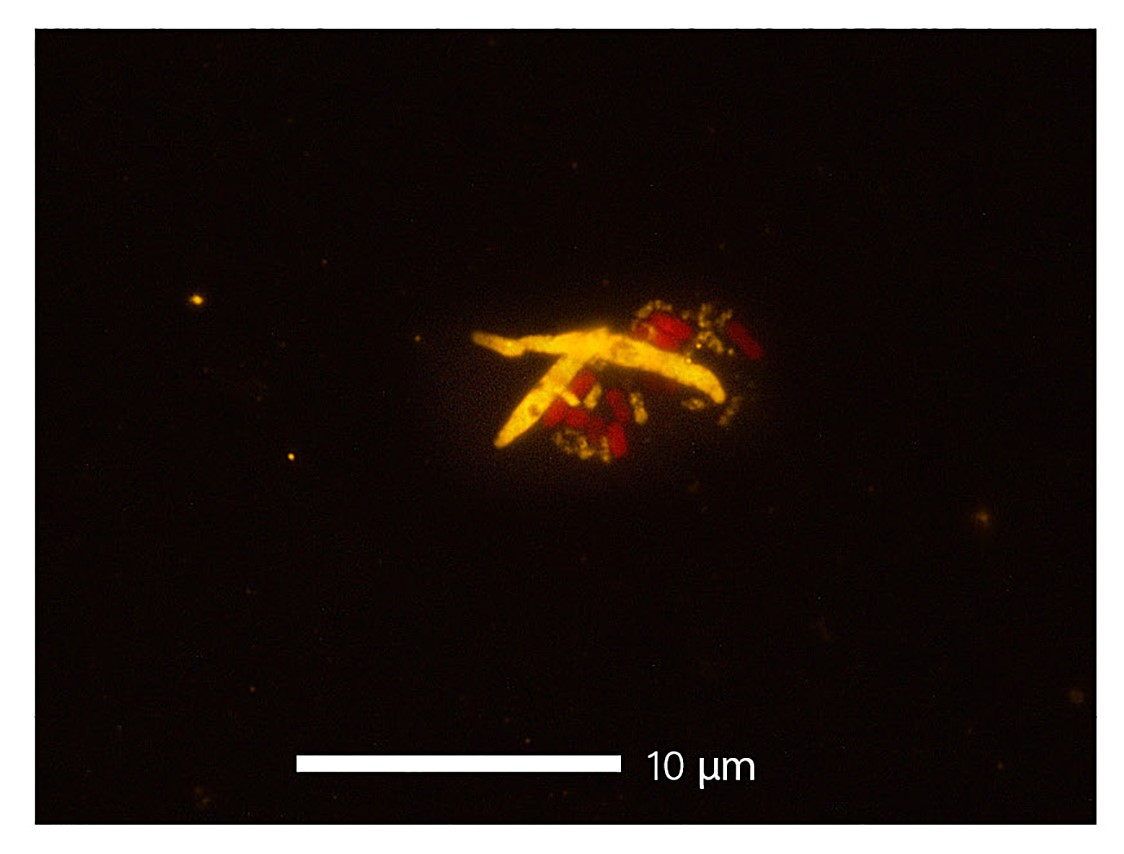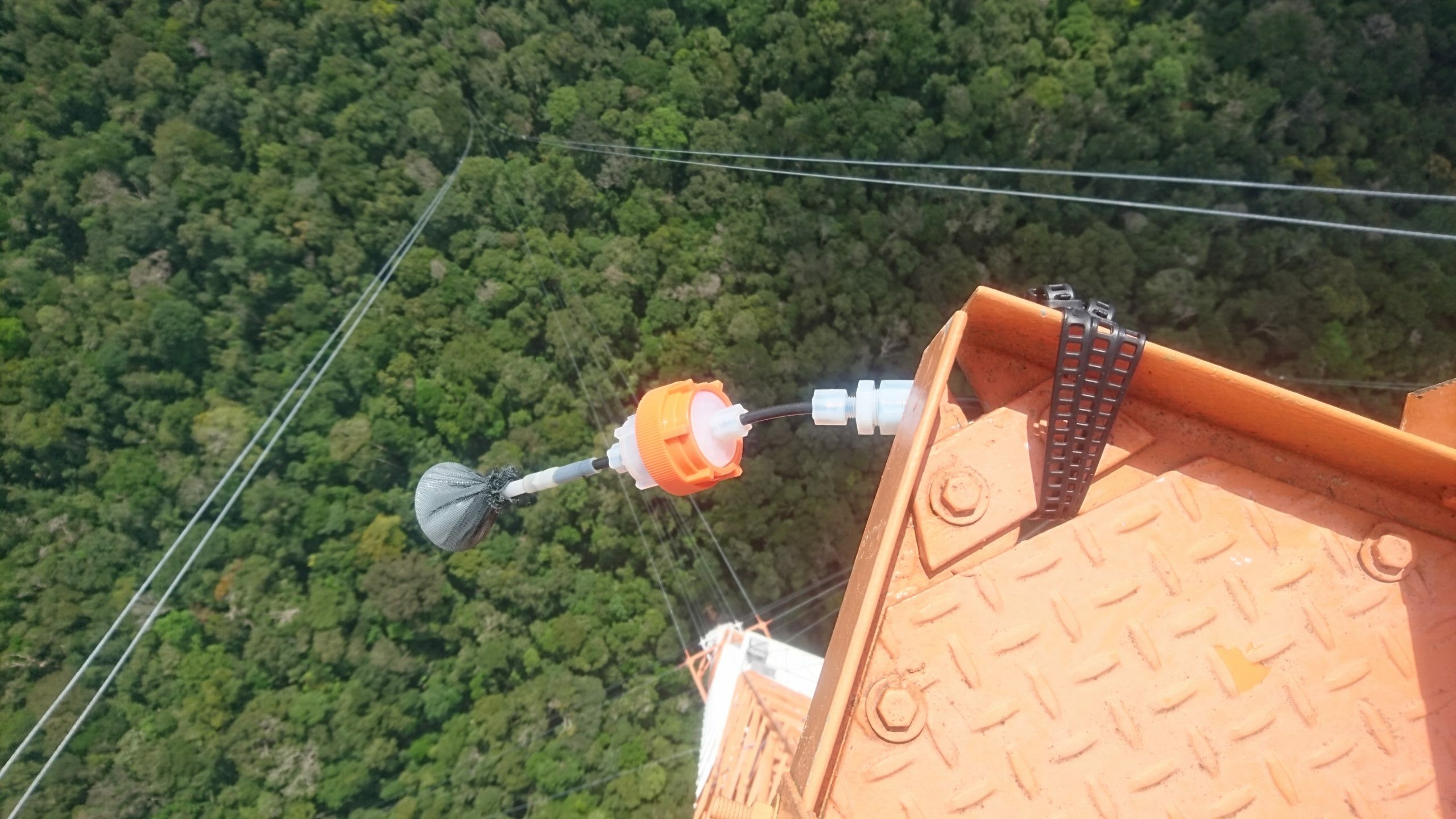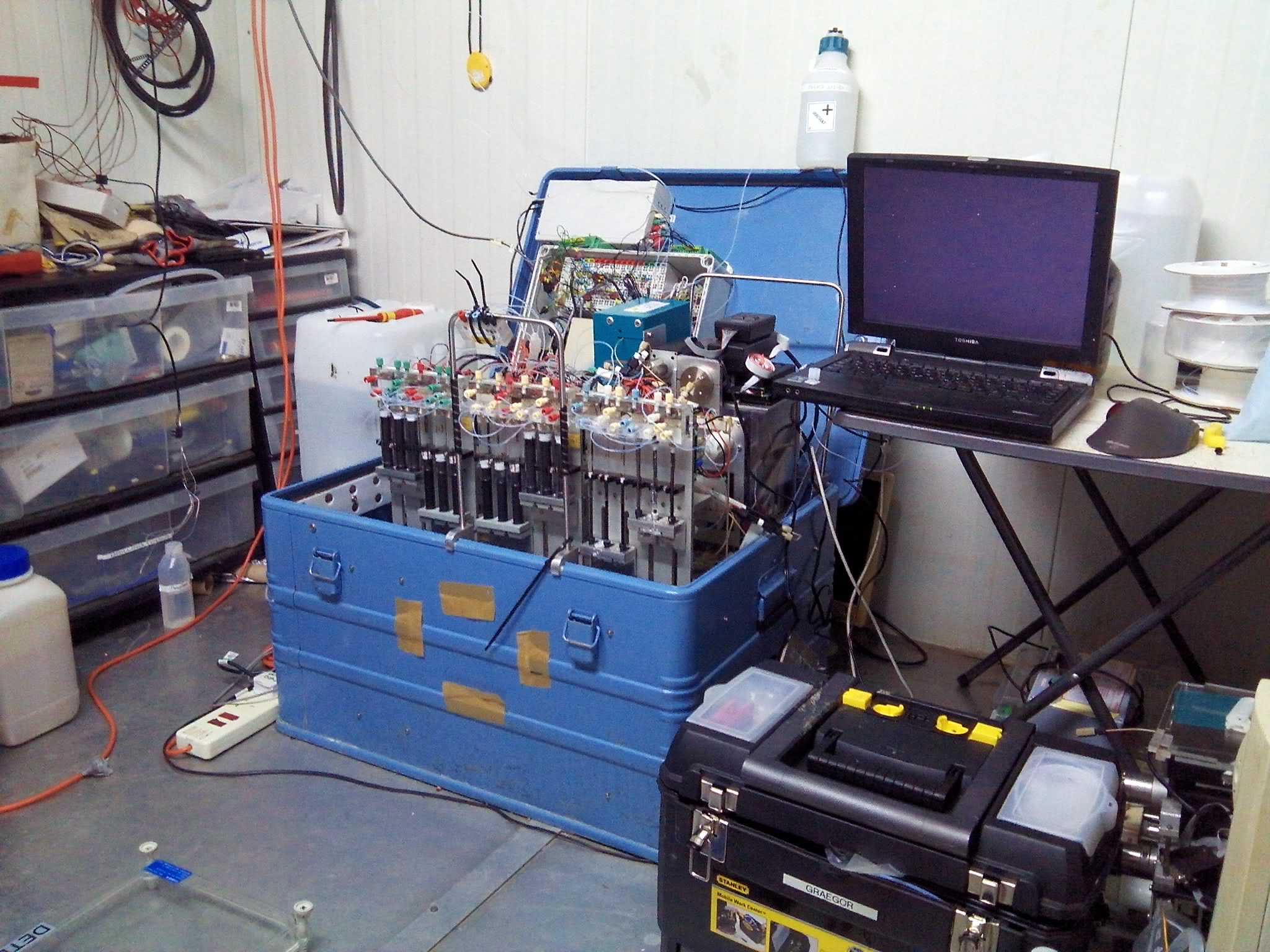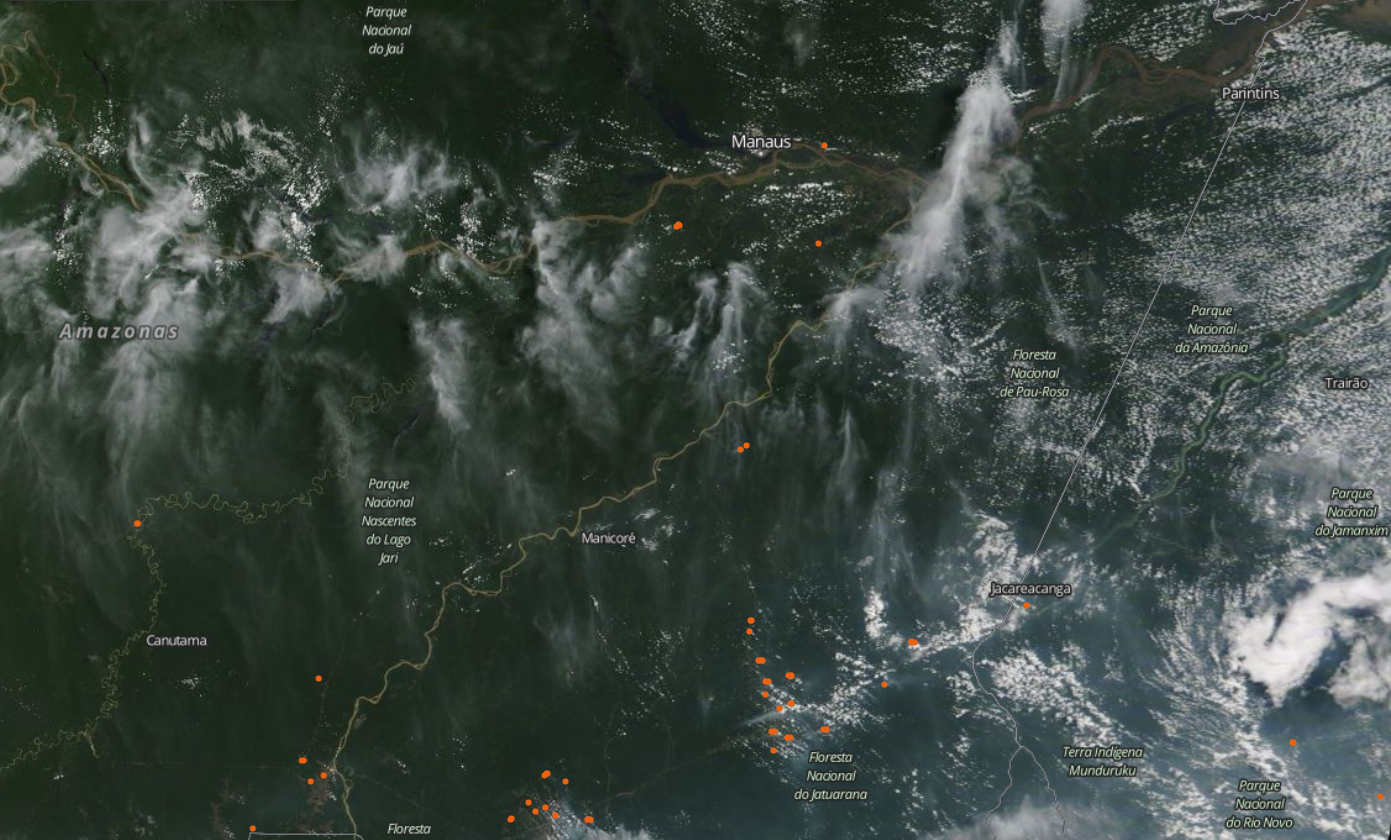Tiny but mighty: bioaerosols
Learning more about aerosols is one of our major assignments at ATTO. This includes inorganic aerosols like soot and other particles associated with biomass burning, for example. But it also includes bioaerosols emitted by the forest itself. We care about them so much because they are important for a whole range of processes. In the atmosphere, all aerosols scatter and absorb light or act as cloud condensation nuclei. In addition, bioaerosols such as bacteria, fungi spores and pollen disperse biological material and species far and wide.
But we need to learn more about the composition, quantity, dispersal, as well as sources and sinks of bioaerosols in remote areas to better understand the pre-industrial background state of the atmosphere. Knowing their role in the climate system will then help us to estimate future climate change.
The Amazon is one of those remote regions that, in parts, still has a near-pristine atmosphere. Furthermore, it is such a large source of bioaerosols that it might be relevant on a global scale.
Therefore, Luciano Huergo and this team, including the Ph.D. students Felipe Souza and Price Mathai took a close look at the diversity of bioaerosols, and specifically bacteria, in the Amazon rainforest. They collected air samples during distinct seasons and at different heights above the ground at ATTO. Then they filtered out all bioaerosols and sequenced a piece of DNA of bacteria. Specifically, they analyzed the sequences encoding the 16S rRNA, a gene marker used for bacterial classification.
Seasons over height
Their data reveal that the bacteria of the Amazon Rainforest are diverse. Felipe Souza, Price Mathai and their co-authors found up to 1000 species in a single sample. Out of those, 128 species were present in all samples. Those appear to make up the core Bacteria species of the region. The composition of the other species varied mainly with seasonal changes in temperature, relative humidity, and precipitation. These meteorological parameters may affect the bacterial communities directly or indirectly because they influence the seasonal cycle of plant communities.
On the other hand, they did not detect significant differences between the ground and canopy levels. The collected data suggest that the soil is not a major contributor to airborne bacteria in the Amazon rainforest. Instead, the identity of some bacteria implies that the leaf surface of plants may act as a source of airborne bacteria. Because of the immense number of plants in the Amazon rainforest, the surface of their plant leaves outnumbers the soil surface area by some orders of magnitude. So it may not come as a surprise that this habitat promotes such a large population of bacteria.
They also identified in the aerosol samples of bacterial species that participate in the nitrogen cycle. Specifically, they identified species that can convert the inert atmospheric nitrogen gas into other nitrogen forms which plants can use to build biomass. These bacterial species may act as biofertilizers within the Amazon forest.
Souza et al. published the study “Influence of seasonality on the aerosol microbiome of the Amazon rainforest” in the journal Science of the Total Environment. DOI: 10.1016/j.scitotenv.2020.144092
Similar articles
More soot particles enter the central Amazon rainforest from brush fires in Africa than from regional fires at certain times.
In a new study, Denis Leppla, Thorsten Hoffmann and their colleagues looked at pinic acid and its chiral forms. Pinic acid forms in the atmosphere through SAO formation from α-pinenes. The team wanted to find out how the chemical reactions in the atmosphere affect the chirality of its product pinic acid.
Bioaerosols influence the dynamics of the biosphere underneath. In a new study, Sylvia Mota de Oliveira and her colleagues used the ATTO site to collect air samples at 300 m above the forest. Then, they used DNA sequencing to analyze the biological components that were present and figure out what species of plant or fungi they belong to. One of the most striking new insights is the stark contrast between the species composition in the near-pristine Amazonian atmosphere compared to urban areas.
In a new study, Marco A. Franco and his colleagues analyzed when and under what conditions aerosols grow to a size relevant for cloud formation. Such growth events are relatively rare in the Amazon rainforest and follow and pronounced diurnal and seasonal cycles. The majority take place during the daytime, and during the wet season. But the team also discovered a few remarkable exceptions.
It is long known that aerosols, directly and indirectly, affect clouds and precipitation. But very few studies have focused on the opposite: the question of how clouds modify aerosol properties. Therefore, Luiz Machado and his colleagues looked into this process at ATTO. Specifically, they studied how weather events influenced the size distribution of aerosol particles.
The Amazon rain forest plays a major role in global hydrological cycling. Biogenic aerosols, such as pollen, fungi, and spores likely influence the formation of clouds and precipitation. However, there are many different types of bioaerosols. The particles vary considerably in size, morphology, mixing state, as well as behavior like hygroscopicity (how much particles attract water) and metabolic activity. Therefore, it is likely that not only the amount of bioaerosols affects the hydrological cycle, but also the types of aerosols present.
Bioaerosols may act as cloud condensation nuclei and ice nuclei, thereby influencing the formation of clouds and precipitation. But so far there is less knowledge about the ice nucleation activity of each bioaerosol group and atmospheric models hitherto have not differentiated between them. Patade et al. created a new empirical parameterization for five groups of bioaerosols, based on analysis of the characteristics of bioaerosols at ATTO: fungal spores, bacteria, pollen, plant/animal/viral detritus, and algae. This makes it possible for any cloud model to access the role of an individual group of bioaerosols in altering cloud properties and precipitation formation.
Biogenic volatile organic compounds remove OH from the atmosphere through chemical reactions, which affects processes such as cloud formation. In a new study, Pfannerstill et al. reveal the important contributions of previously not-considered BVOCs species and underestimated OVOCs to the total OH reactivity.
Ramsay et al. measured inorganic trace gases such as ammonia and nitric acid and aerosols in the dry season at ATTO. They are to serve as baseline values for their concentration and fluxes in the atmosphere and are a first step in deciphering exchange processes of inorganic trace gases between the Amazon rainforest and the atmosphere.
Soot and other aerosols from biomass burning can influence regional and global weather and climate. Lixia Liu and her colleagues studied how this affects the Amazon Basin during the dry season. While there are many different interactions between biomass burning aerosols and climate, they found that they overall lead to fewer and weaker rain events in the Amazon rainforest.


